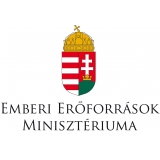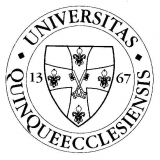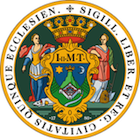Main Sponsors
-
 Reiso Pécs
Reiso Pécs -
 Hotel Lycium****
Hotel Lycium**** -
 Pécs ZOO
Pécs ZOO -
 http://www.mecsekegyesulet.hu/
http://www.mecsekegyesulet.hu/ -
Doro Ékszer
-
 Hetényi Pincészet
Hetényi Pincészet -
 Zsályaliget Élménypark
Zsályaliget Élménypark -
 Fabrik Barkács Szaküzlet
Fabrik Barkács Szaküzlet -
 Katica tanya
Katica tanya -
 E.ON Hungary
E.ON Hungary -
 http://www.ipark-pecs.hu/
http://www.ipark-pecs.hu/ -
 https://www.otpbank.hu/otpklub/Fooldal
https://www.otpbank.hu/otpklub/Fooldal -
 http://www.pecsibalett.hu/hindex.html
http://www.pecsibalett.hu/hindex.html -
 www.lakics.hu
www.lakics.hu -
 Gépszer
Gépszer -
 http://www.kormany.hu/hu/emberi-eroforrasok-miniszteriuma
http://www.kormany.hu/hu/emberi-eroforrasok-miniszteriuma -
 http://www.pnsz.hu/
http://www.pnsz.hu/ -
 http://www.pecs.hu/
http://www.pecs.hu/ -
 Mischl Autóház
Mischl Autóház -
 Öko-Trade Ltd
Öko-Trade Ltd -
 Bóly and Vicinity Savings Bank
Bóly and Vicinity Savings Bank -
 Mecsekerdő Forestry Ltd
Mecsekerdő Forestry Ltd -
 http://www.deltakarek.hu/
http://www.deltakarek.hu/ -
 University of Pécs
University of Pécs -
 http://kloe.hu/
http://kloe.hu/ -
 http://www.lafarge.hu/
http://www.lafarge.hu/ -
 http://www.gondoldo.hu/
http://www.gondoldo.hu/


Liszt & Wagner
8 Dec 2012. 18:00 | Kodály Centre
For Grown-Ups | Pannonicum Series 2012/2013 |
- Liszt Ferenc: Festklänge (Festival Sounds) - symphonic poem
- Liszt Ferenc: Prometheus - symphonic poem
- Richard Wagner: The Valkyrie - Act 1
Programme
Orchestra
Pannon Philharmonic OrchestraConductor

Tibor Bogányi
In 2017/2018, he is spending his seventh season as chief conductor of the Pannon Philharmonic.
Tibor Bogányi is of Hungarian descent and is regarded as the most interesting and talented member of the generation of Finnish conductors. At the age of 28 he was appointed Chief Conductor of… More
Soloist

Michael Bedjai
Sigmund

Tünde Szabóki
Sieglinde

Krisztián Cser
Hunding

Csaba Káel
creative producer

Ferenc Anger
director

Éva Szendrényi
scenery designer
Ticket Prices: 4990, 3990, 2990, 1000
About the Programme
Franz Liszt’s symphonic poem, the Festklänge (Festive Sounds, 1854) has biographic inspiration: he composed wedding music to his planned – but at the end not arranged - marriage ceremony with Princess Carolyne Sayn-Wittgenstein. Given the circumstances, it is not surprising that quite unusually for a symphonic poem, Liszt didn’t match the musical units to specific events, experiences, but rather magically creates an intimate, festive atmosphere in front of the audience. With his work titled Prometheus, Liszt chose a Greek mythology character for one of his symphonic poems for the second time. This one was inspired by Herder’s drama with the same topic. The main character is described in the preface to the score as a symbol of “courage, suffering, perseverance and redemption". The music proclaims the glory of the victory won. The Valkyrie (Die Walküre) is the second one of Wagner's four-evening-long Ring. Into the story of the tetralogy’s first part, deploying mystical figures here enter humans: Siegmund and Sieglinde, the Wälsung siblings-lovers, who were born by Mother Earth to the divine Wotan to fulfil a plan, untouchable by the gods – to regain the ring that means world supremacy, from its robber. The culmination point of the Act 1 of the work built up from meaningful leading motives is the love scene of Siegmund and Sieglinde’s finding of each other.
















































